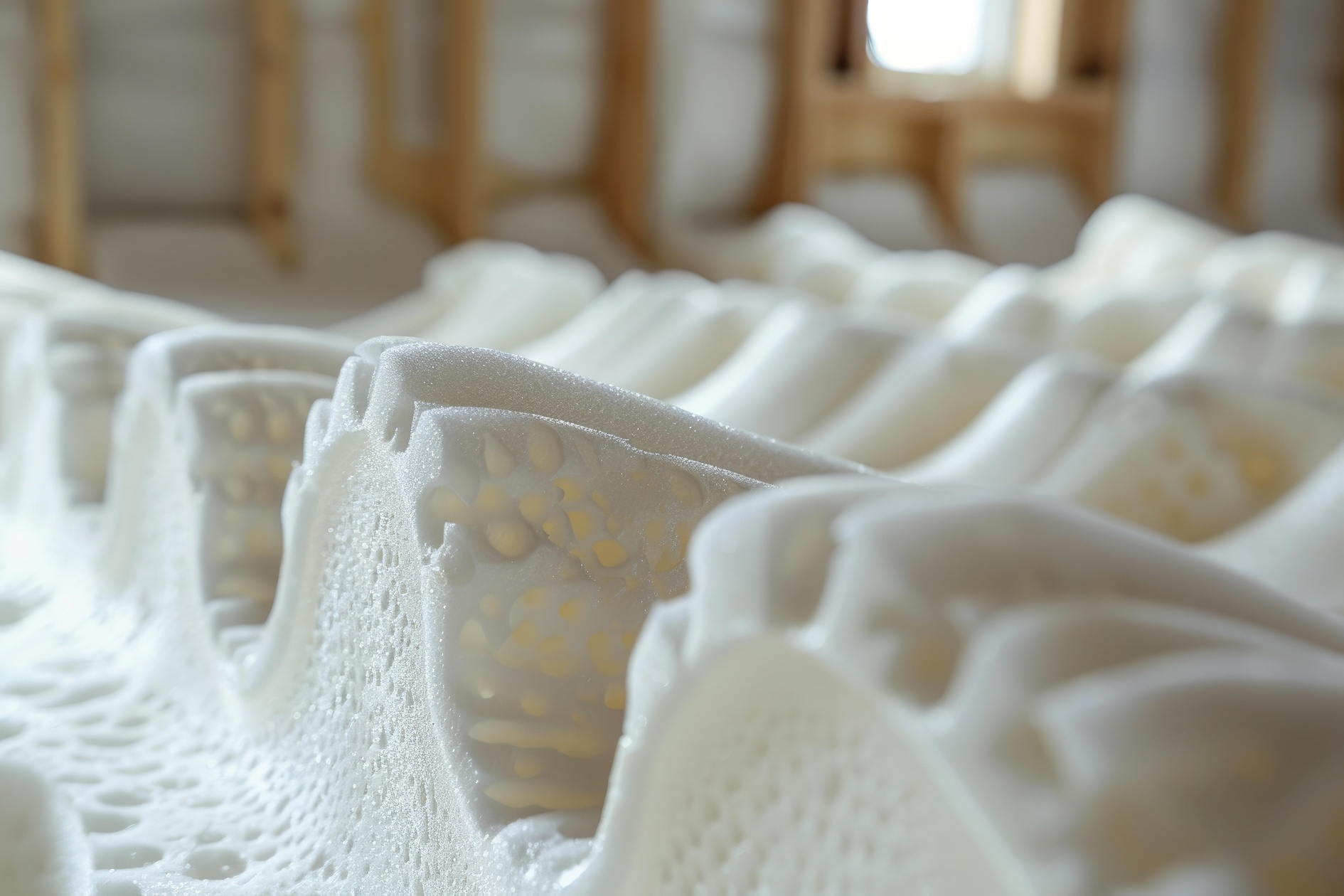America has a foam problem. Drive past any landfill, and you’ll see mountains of white packaging material that seems to last forever. But here’s the thing: smart scientists and engineers are fixing this mess with some pretty amazing new technology. They’re creating foam that actually disappears instead of sitting around for centuries.

Close up of an orthopedic memory foam mattress highlighting its breathable structure, promoting air circulation and comfortable sleep
The Old Problem
Traditional foam packaging sticks around way too long. A coffee cup made from regular foam can sit in a landfill for 500 years or more. That’s longer than America has been a country. Multiply that by billions of packages, and you get a real headache. The material is resistant to natural decomposition. Rain can’t wash it away. Bacteria cannot digest it. Heat doesn’t help much either. It just sits there, a useless presence in a space we desperately need.
Every year, Americans throw away approximately twenty-five billion foam containers. These all contribute to environmental waste. Visualize a garbage truck, its back end straining under the weight of the many foam containers inside. Now picture 68,000 of those trucks. That is our yearly foam waste production.
Smart Solutions Are Here
The good news? Scientists have cracked the code of making foam that actually goes away. New types of foam break down in months instead of centuries. Some dissolve in hot water. Others turn into harmless chemicals that feed plants. These innovative materials perform comparably to traditional foam. They keep food hot, protect fragile items during shipping, and cost about the same to make. The big difference happens after you throw them away.
Some new foams need special conditions to break down properly. Industrial composting facilities heat them up and add specific bacteria. The foam basically gets digested and becomes fertilizer. Other types work in regular home compost bins.
The Science Behind the Magic
How do you make foam that disappears? It begins with various raw materials. Manufacturers like Epsilyte use plant-based ingredients instead of petroleum chemicals. Corn starch, potato starch, and even algae become building blocks. Biodegradable EPS represents one exciting direction in this research. Scientists add special ingredients to the foam to make it decompose. These additives gradually weaken the material.
Another approach uses completely different chemistry. Mushroom-based foams grow naturally in molds. Seaweed-based materials dissolve in water. A few experimental foams are edible, even if their taste isn’t the best.
Real-World Applications
These smart foams are already showing up in stores and delivery boxes. Food packaging is the main area of concern, as people are frustrated by the idea of containers that don’t break down. Fast-food chains are testing compostable packaging. Online retailers experiment with dissolving packing peanuts.
The construction industry is getting interested too. Foam insulation that breaks down safely after buildings get demolished could solve another waste problem. No more digging foam chunks out of old walls. Medical applications look promising as well. Disposable foam products in hospitals could become compostable instead of adding to medical waste streams.
Challenges to Overcome
The technology isn’t perfect yet. Some biodegradable foams cost more to make. Others need very specific conditions to break down properly. A few types don’t work as well in extreme temperatures. Storage can be tricky too. Biodegradable materials sometimes start breaking down before you want them to. Companies are learning how to control the timing better.
Conclusion
Innovation is speeding up fast. New materials appear every few months. Costs keep dropping as production scales up. More cities are building the composting facilities needed to handle these materials properly. Smart foam technology proves that big environmental problems can have elegant solutions. Engineers are solving waste problems. The next time you open a package, the foam could vanish, resulting in a cleaner Earth.
